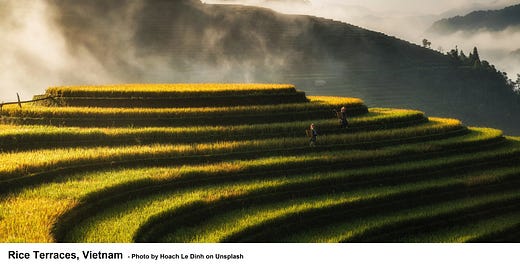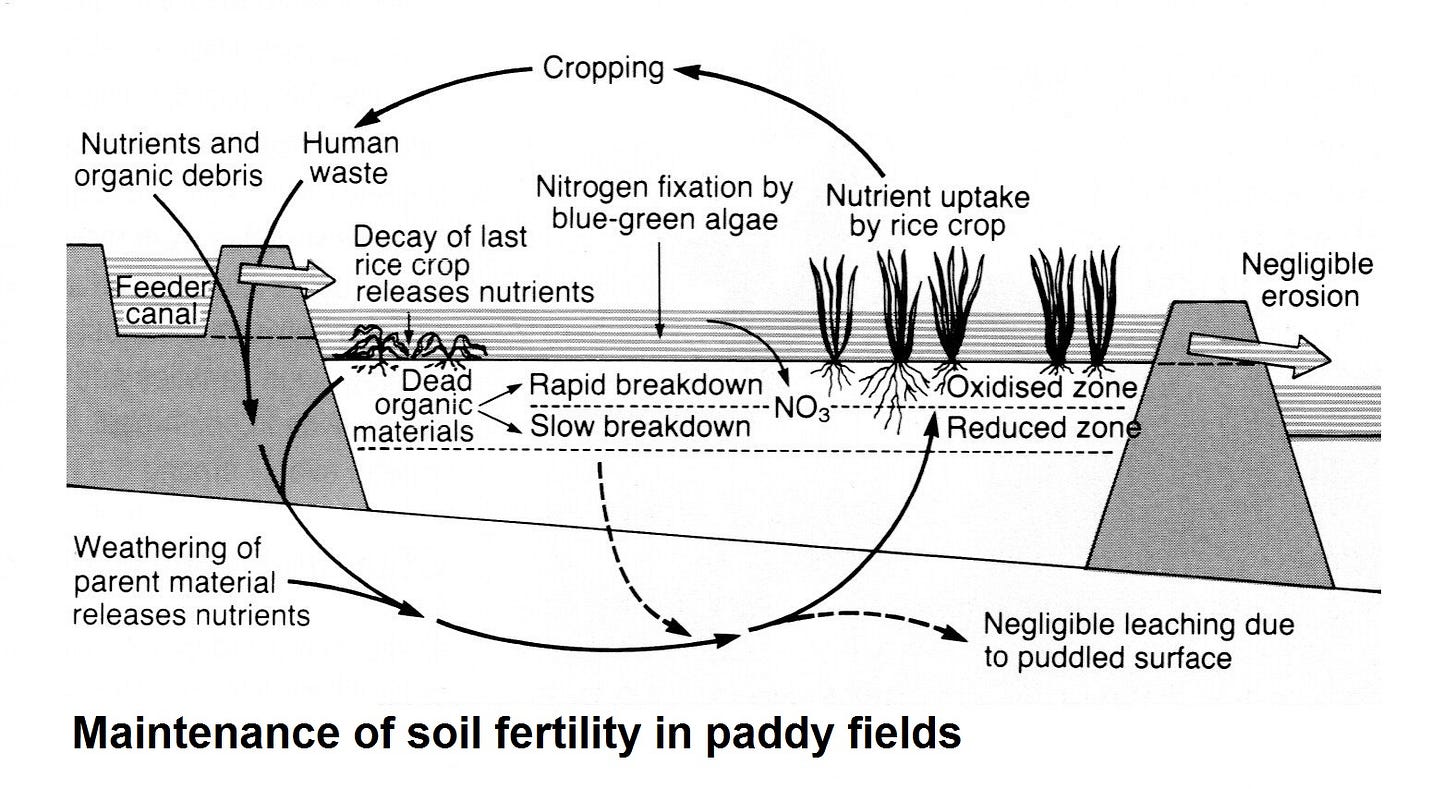Southeast Asia has a long history of cultivating rice, with traditional methods deeply intertwined with the region's geography and social fabric. Here's a look at these practices and how modern advancements have boosted production:
Traditional Methods:
Wet Rice Cultivation: The dominant method, relies on abundant monsoon rains or intricate irrigation systems to flood paddies. This creates an ideal environment for rice growth while suppressing weeds [1].
Shifting Cultivation: Practiced in hilly areas, involving clearing a patch of forest, burning vegetation for nutrients, and planting rice for a few seasons before the land is depleted and a new plot is chosen [2].
Terraced Farming: A marvel of engineering, where rice paddies are carved into hillsides to create leveled fields for water retention and cultivation [2].
Seed Selection and Planting: Farmers traditionally saved seeds from previous harvests, ensuring well-adapted varieties. Seedlings were often nurtured in separate nursery beds before transplanting into paddies [3].
Community Labor: Rice cultivation was often a communal effort, with tasks like plowing, transplanting, and harvesting shared among villagers, fostering social cohesion [3].
Developments Leading to Increased Production:
Since the 1960s, several factors have significantly increased rice production in Southeast Asia:
Green Revolution: The introduction of high-yielding rice varieties (HYVs) played a pivotal role. These varieties, developed through international research efforts, offered greater yields and responsiveness to fertilisers [4].
Improved Irrigation: Investments in dams, canals, and water management infrastructure ensured a more reliable water supply for paddies, particularly during dry spells [5].
Increased Use of Fertilizers and Pesticides: Modern fertilisers and pesticides improved soil fertility and reduced crop losses to pests and diseases, leading to higher yields [4].
Mechanisation: The introduction of tractors and other farm machinery facilitated quicker land preparation, harvesting, and transportation, allowing farmers to manage larger areas [6].
References:
[1] The Role of Rice in Southeast Asia - Association for Asian Studies: https://www.asianstudies.org/publications/eaa/archives/the-role-of-rice-in-southeast-asia/
[2] Pathways to Asian Civilizations: Tracing the Origins and Spread of Rice and Rice Cultures: https://www.researchgate.net/publication/313826087_Domestication_and_Development_of_Rice_Cultivars
[3] Rice and Forest Farming in East and South-East Asia | The Agricultural Revolution in Prehistory: Why did Foragers become Farmers?https://pubmed.ncbi.nlm.nih.gov/38413584/
[4] Changes in Rice Farming in Mainland Southeast Asia | East-West Center: https://www.eastwestcenter.org/apply/research-innovation-collaboration-exchange-rice
[5] The Impact of Irrigation on Agricultural Development: A Review of Theory and Empirical Evidence: FAO
[6] The future of mechanization in Asian agriculture - Food and Agriculture Organization of the United Nations: FAO
Typically the above article answers the fairly common exam question below
Describe the traditional methods of rice cultivation in southeast Asia and comment on the developments that have led to increased production since the 1960s.








